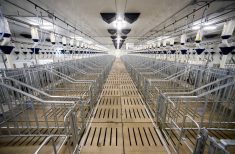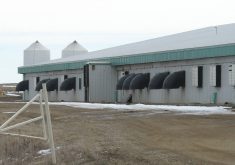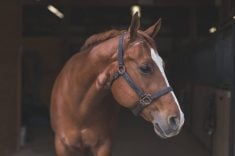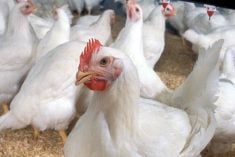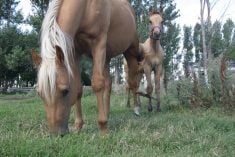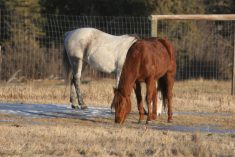One of the most difficult decisions dairy farmers face when building a new free-stall barn is determining the best ventilation system for the facility.
A building can be ventilated naturally by putting a hole in the roof and allowing air to come in through the side, while the cow heats the air up. A barn can also be ventilated mechanically (with fans).
Historically, this was done with a wind tunnel concept. However, as dairy herds got bigger, the wind tunnels became too long to be effective.
Read Also
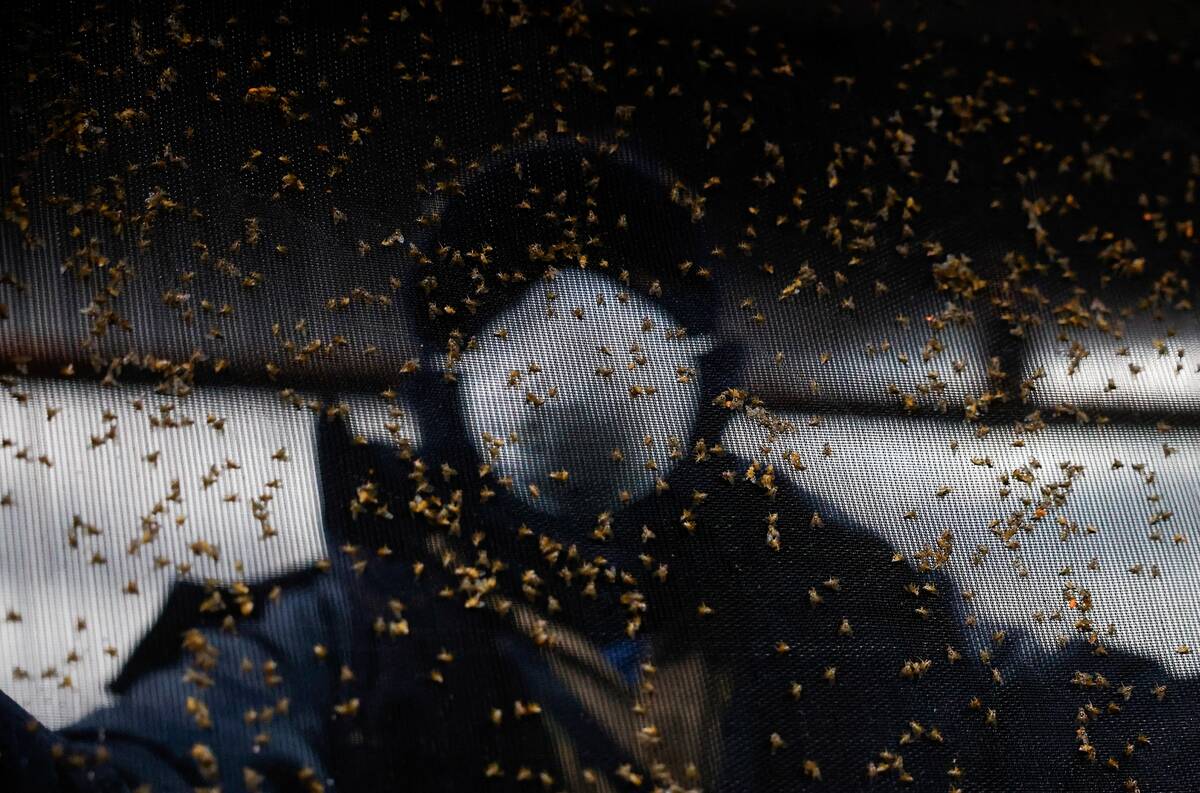
Canada too cold for New World screwworm
New World screwworm is closing in on the U.S. from Mexico, but the deadly livestock parasite isn’t likely to dig a surviving population in Canada, even if the fly species sneaks over the border.
The cows near the exhaust end of the barn would consistently be breathing dirty air. To tackle this issue, a cross-ventilated system, with fans placed at intervals along one side of the barn, was developed. But even with this system a cow closer to the fresh-air side had advantages over one at the exhaust side. In addition, there are significant costs associated with both of these mechanical solutions because they require fans to run year round, and a backup generator in case of power loss.
To tackle these challenges, a year and a half ago Wisconsin veterinarian, Dr. Gordie Jones developed an “all-seasons hybrid” barn that he described to an attentive crowd at the Manitoba Dairy Conference late last year.
The project began when Dr. Jones teamed up with a Wisconsin dairy farmer who was building a new barn. Initially, the farmer wanted to build a cross-ventilated barn, but Jones convinced him to try this new approach.
The goals of the new barn were:
- No heat stress above 20 C;
- No cow bunching (a problem with naturally ventilated barns); and
- No frozen manure.
In a nutshell, the barn is naturally ventilated below 20 C and mechanically ventilated above 20 C with 40 to 60 air exchanges per hour (comparable to other mechanical methods).

“No power and no fans are needed below 20 C. Once we are below 20 C, the side walls are opened and it’s a naturally ventilated barn,” Jones said.
“Once we reach -10 C to -15 C, we start to close the exhaust of the barn and we make four continuous air exchanges per hour. The cows heat up that air and we have no frozen manure.”
The temperature inside the barn can be as much as 30 C higher than the outdoor temperature (without steam becoming an issue). So, even in a severe Manitoba cold spell, when temperatures reach -40 C, the temperature will be -10 C in the barn and manure will not freeze (of course, water will have to be insulated and heated with electricity to keep it from freezing).
The design they landed on had five-metre side walls, an insulated ceiling, a one-metre overshot roof vent, thermostat-controlled curtains, and one-metre-diameter fans placed every three metres (angled at 22 degrees) along both sides of a four-row barn.
“What that now means, is we have one fan for every four beds,” Jones said.
The fans blow onto the beds so there’s no need for a fan in the feed lane. Air speed of 34 km/h at the fan, results in air speed at the bed space of 12 km/h and at the feed lane between 16-22 km/h.
In addition, every 18 metres, there is a big, low-speed, high-volume ceiling fan that’s used in the winter to blow warm air down and keep manure from freezing.
While some of the elements of this barn add to construction costs over more conventional designs, when the operating costs were analyzed by the University of Wisconsin, the all-seasons hybrid, showed impressive efficiency. At US$18.60 per cow/year to run the fans, it was comparable to the US$18 a naturally ventilated barn (with cooling fans over the feed lanes) delivered for the same-size herd.
A cross-ventilated barn is more than twice that at US$42 per cow and the wind tunnel ventilated barn costs almost three times as much (US$56/cow) and that doesn’t include the cost of the generator.
So far, the new barn has met all the goals. With recorded temperatures reaching as high as 34 C and as low as -33 C, all cows are getting fresh air, there was no heat stress, no cow bunching and manure didn’t freeze.
However, the most important data is the effect this new barn had on herd productivity. Keeping in mind that the new facility addressed a 30 per cent overcrowding issue, the dairy’s productivity increased 26 per cent (from 38 kg to 48 kg per cow) after the upgrades.
“It turns out that if you cool cows off and if you give them fresh air, they eat more, and ultimately, they milk more,” said Jones.




